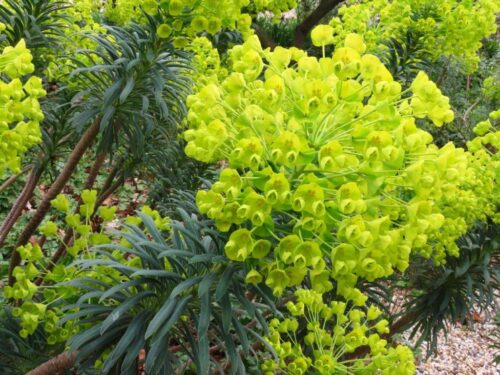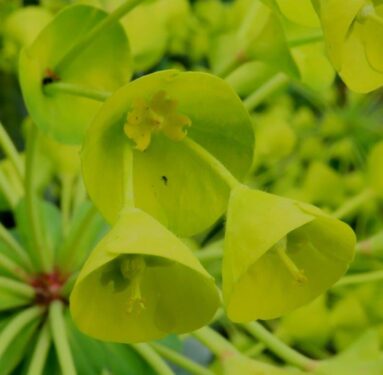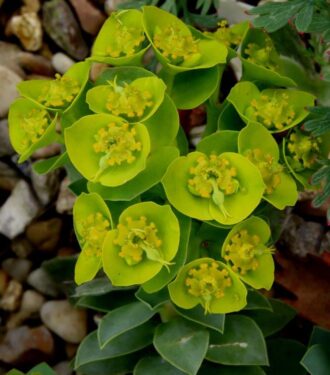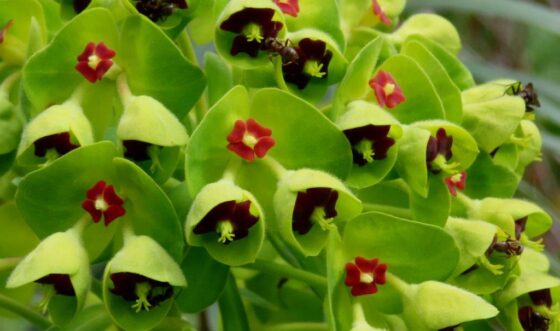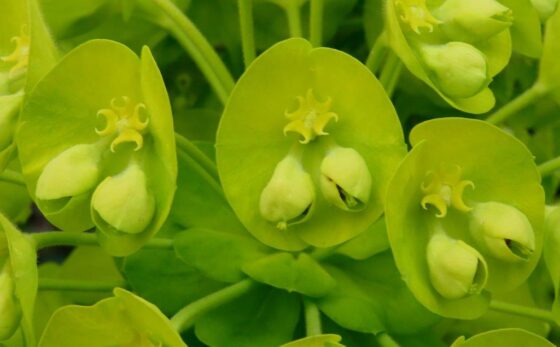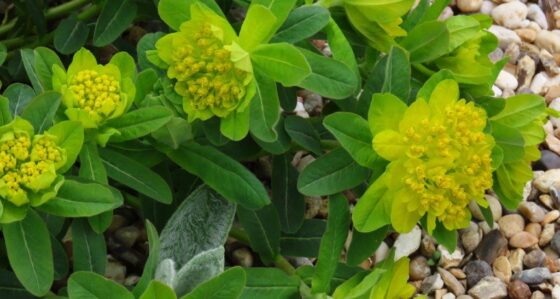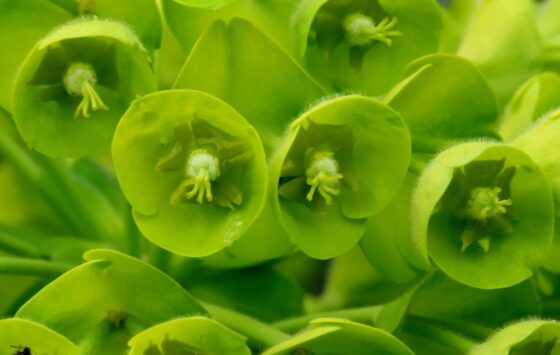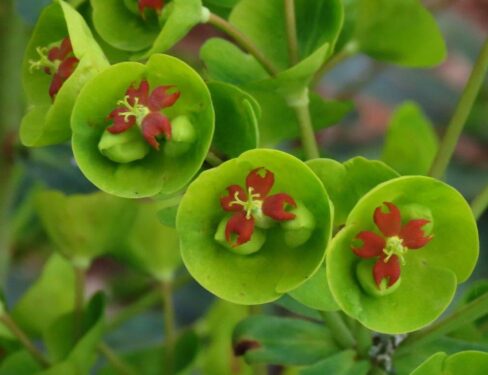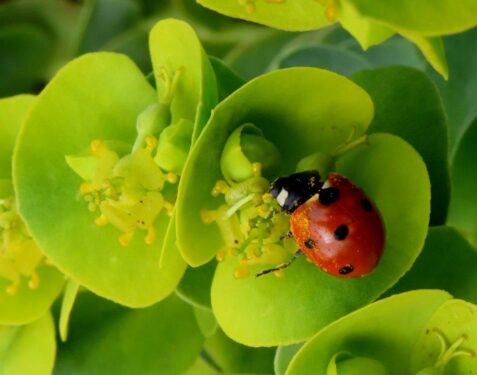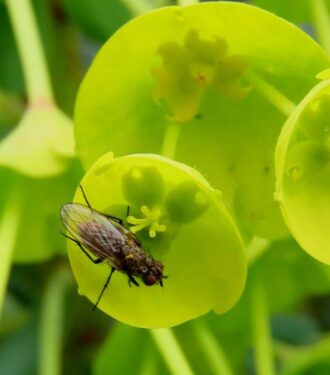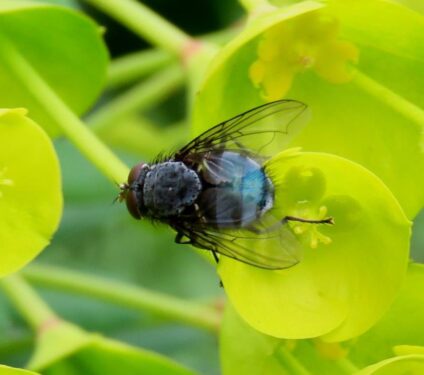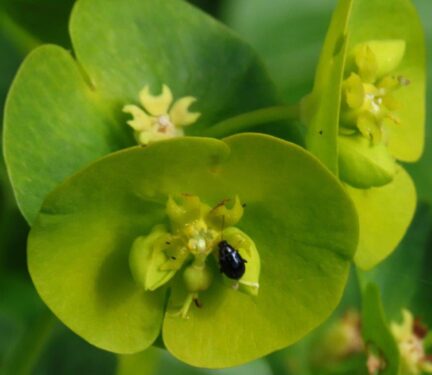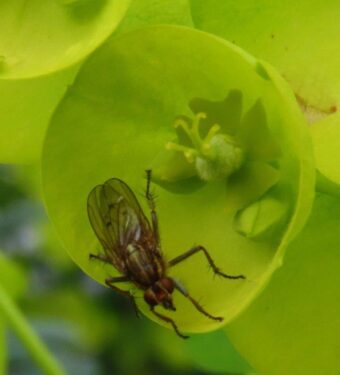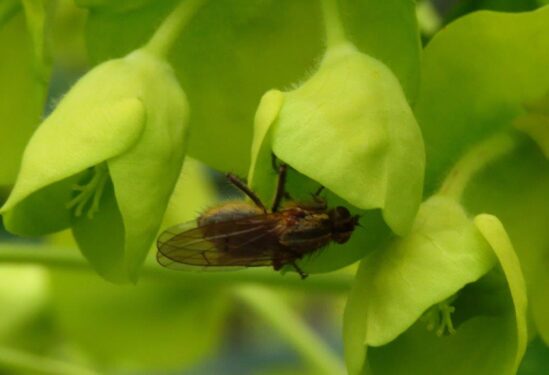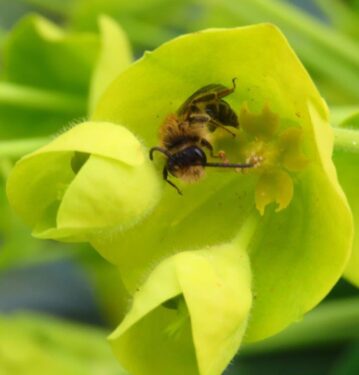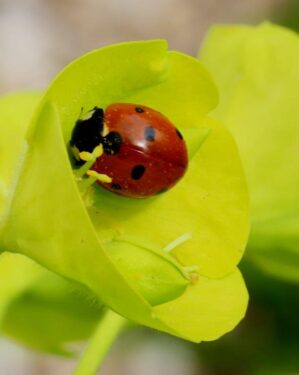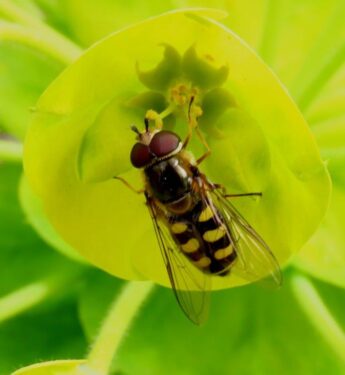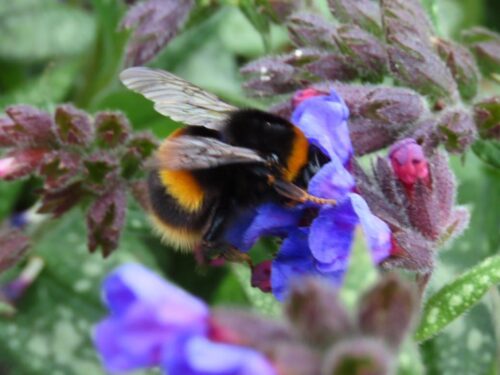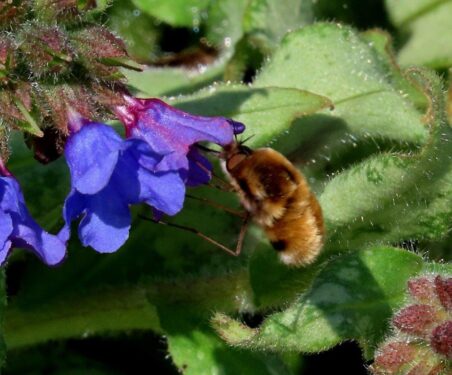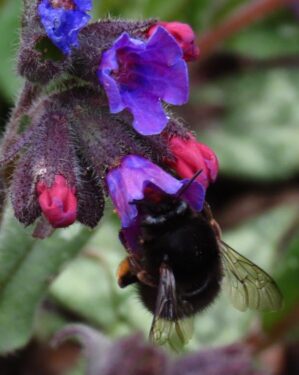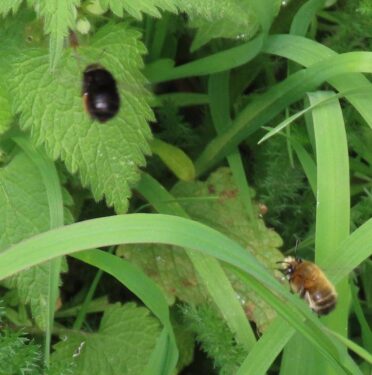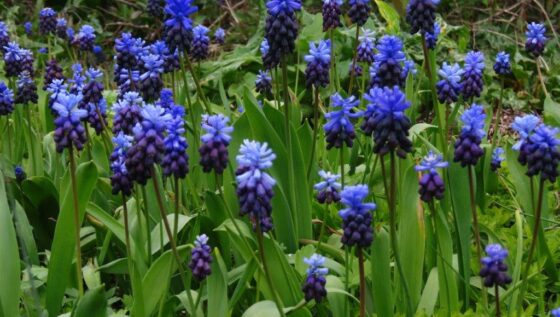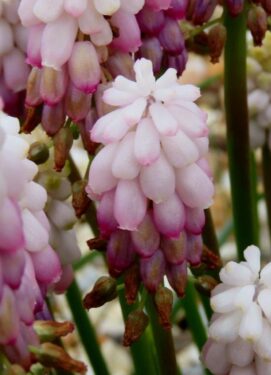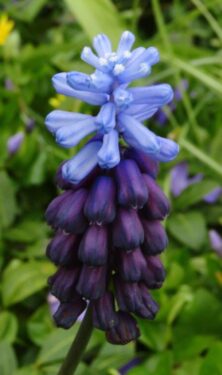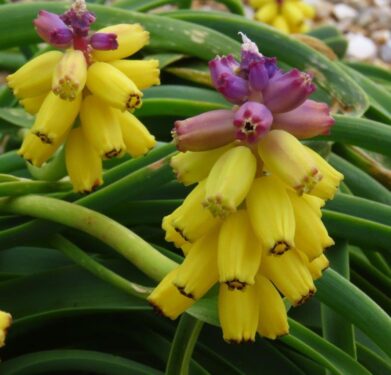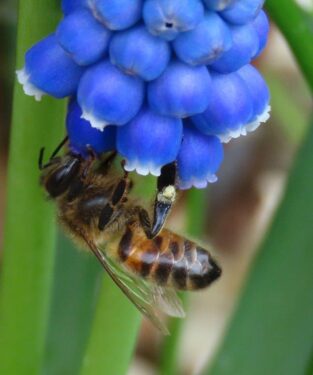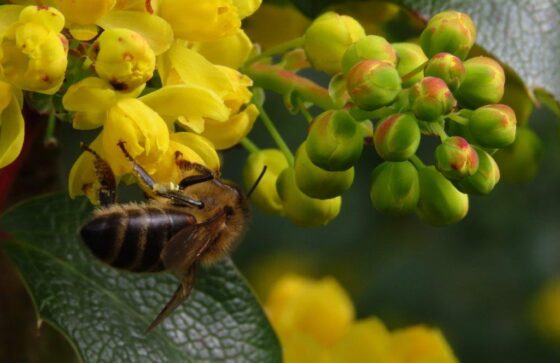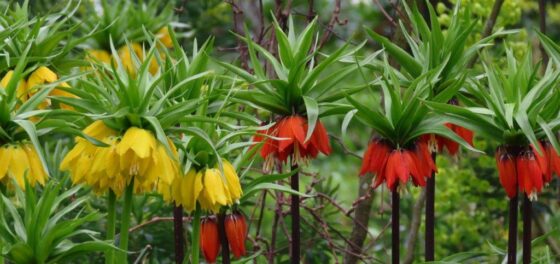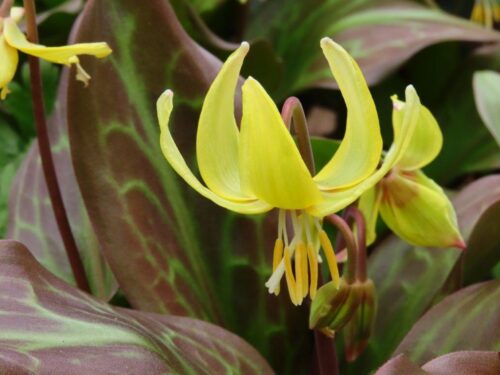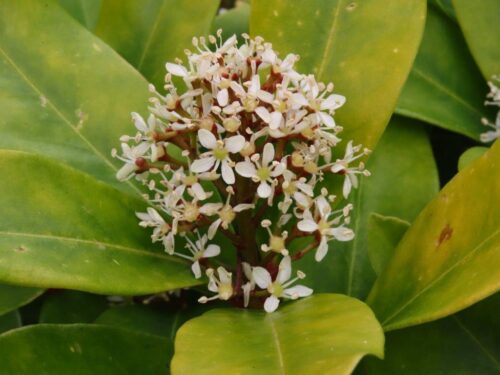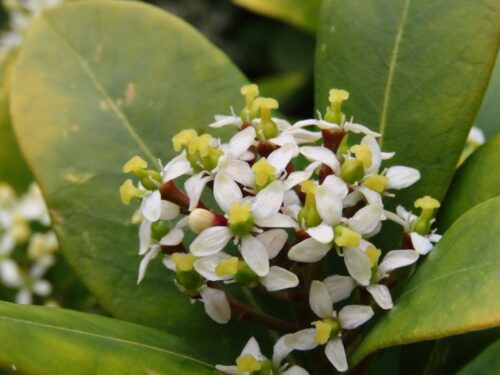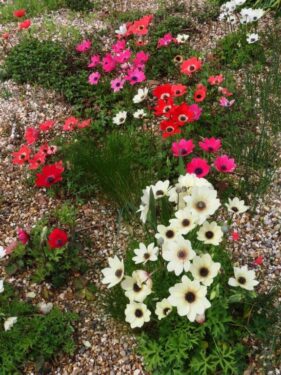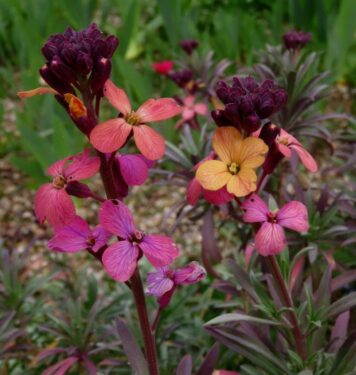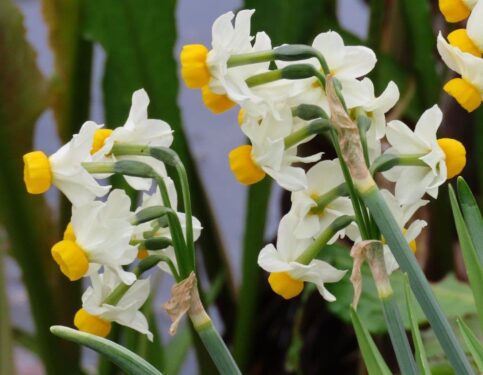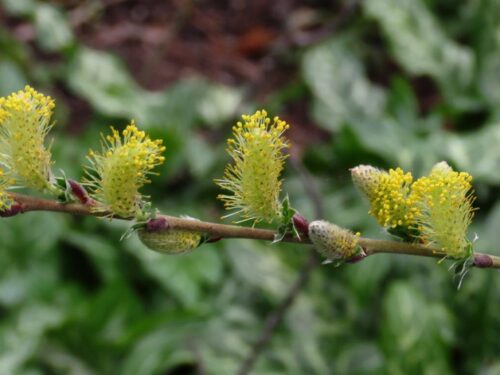Spurges (Euphorbia) are one of the staples of gardens such as Beth Chattos that pride themselves at being water-wise. With their often acid-green inflorescences, they form many a backdrop, but too rarely take centre-stage. But they do have much of interest, not least because they are all so easily recognisable as close relatives with a wholly unique flower structure, called a ‘cyathium’ (one for the pub quizzers and crossword buffs). Here in the garden we have half a dozen or more forms flowering right now, with a whole range of others to come throughout the summer season.
Within the bowl of the cyathium lie not only the naughty bits but also the nectar glands, often distinctively coloured and/or shaped, and which are important features for the identification to species.
And along with the pollen-bearing stamens, the nectar glands are the source of sustenance for insects. Given their open inflorescences, with no way of restricting access to potential pollinators, spurges help support a vast range of insects, as shown today with hoverflies, other flies, pollen beetles, ladybirds and mini-miner bees all basking in the largesse.
The temperature was still on the chilly side, so there were in fact rather few insects around although lungwort was drawing in those species with long-enough tongues to get deep into the flowers and find the nectar. Queen bumblebees and Dark-edged Bee-flies were prospecting, but most numerous were the Hairy-footed Flower-bees, with jerky flight and relatively high-pitched buzz, the larger, almost black females often being shadowed by a smaller, gingery male… Spring in the air!
Otherwise, the (mostly) blue grape-hyacinths and squills and yellow mahonias seemed to be the preferred forage sources for Honeybees…
But as can be seen from the photos below, there are many more nectar and pollen sources waiting in the wings for the burst of insect activity which should be on its way very soon. For insects, it is a case of ‘Right Plant, Right Place, Right Time’; given the endlessly variable interplay between the floral availability, insect emergence and weather conditions, this is where gardens like Beth Chatto’s (and indeed any garden that is not poisoned with pesticides, manicured to death or choked under plastic grass) come into their own.

